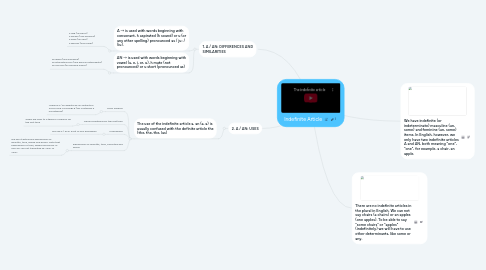Indefinite Article
by Walter Dueñas


1. 1. A / AN: DIFFERENCES AND SIMILARITIES
1.1. A → is used with words beginning with consonant, h aspirated (h sound) or u (or any other spelling) pronounced as / ju: / (iu).
1.1.1. a dog (un perro) a person (una persona) a book (un libro) a woman (una mujer)
1.2. AN → is used with words beginning with vowel (a, e, i, or, u), h mute (not pronounced) or u short (pronounced as)
1.2.1. an apple (una manzana) an interesting film (una película interesante) an old man (un hombre mayor)
2. 2. A / AN: USES
2.1. The use of the indefinite article a, an (a, a) is usually confused with the definite article the (the, the, the, las)
2.1.1. Noun singular
2.1.1.1. Usamos a / an delante de un sustantivo SINGULAR CONTABLE (ver contables e incontables)
2.1.2. Name something for the first time
2.1.2.1. When we refer to a thing or a person for the first time
2.1.3. Professions
2.1.3.1. We use a / an in front of any profession
2.1.4. Expressions of quantity, time, velocities and prices
2.1.4.1. We use it with some expressions of quantity, time, speed and prices. Note that expressions of time, speed and prices "a" and "an" are not translated by "one" or "one".
